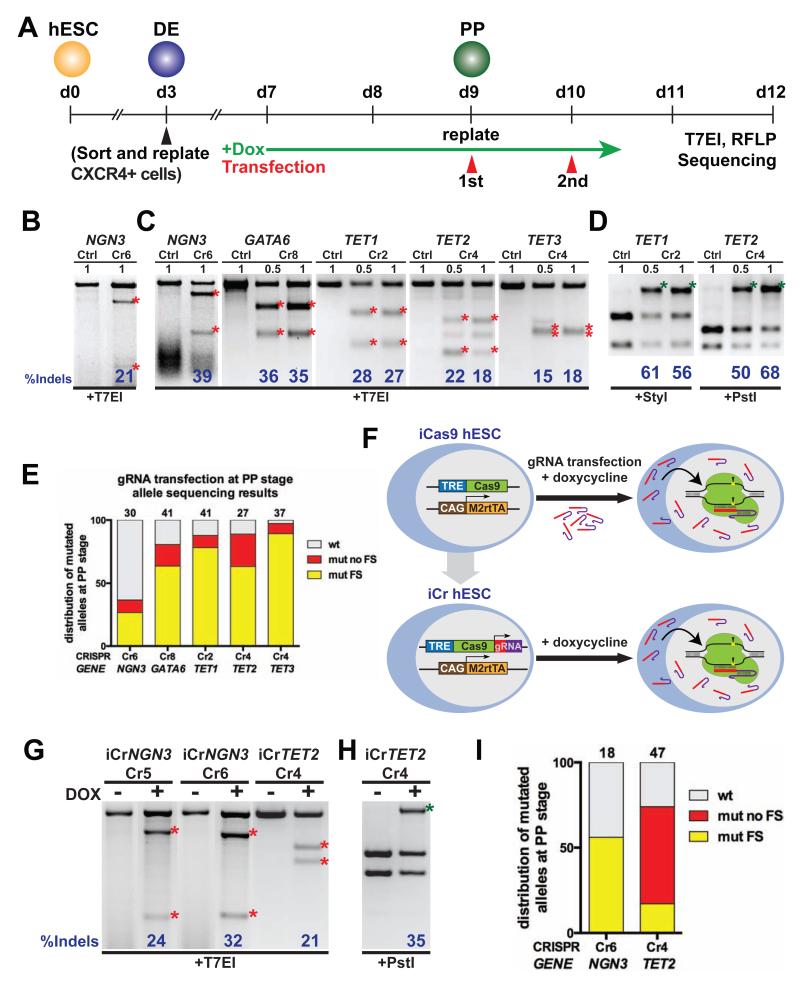Figure 6. Inducible gene knockout.
(A) Strategy of inducible gene knockout. DE, definitive endoderm stage; PP pancreatic progenitor stage. (B and C) T7EI assay in HUES8 iCas9 cells transfected with gRNAs targeting NGN3 (Cr6) at the PP stage (B), or sorted CXCR4+ DE cells differentiated to the PP stage, and transfected with gRNAs targeting NGN3 (Cr6), GATA6 (Cr8), TET1 (Cr2), TET2 (Cr4) and TET3 (Cr4) (C). (D) RFLP analysis of TET1 Cr2 and TET2 Cr4 transfected samples from (C). (E) Allelic sequence distribution in differentiated HUES8 iCas9 cells transfected with different gRNAs at PP stage. wt, wild-type; mut, mutation; FS, frameshift. (F) Schematic illustrating the TALEN-mediated establishment of iCr hESCs for inducible gene knockout. A U6 Pol III driving constitutive expression of a specific gRNA is included 3′ of the inducible Cas9 expression cassette at the AAVS1 locus, allowing gene knockout in all doxycycline treated iCr hESCs. (G) T7EI assay in differentiated iCr hESC lines expressing NGN3-Cr5 (#7), Cr6 (#12) or TET2-Cr4 (#2) gRNAs, treated with doxycycline at the PP stage. (H) RFLP analysis of iCrTET2 (Cr4, #2) hESCs from (G). (I) Allelic sequence distribution in differentiated iCr hESCs treated with doxycycline at PP stage. The number of independent clones analyzed is indicated above each column in panel E and I.
See also Figure S5.

